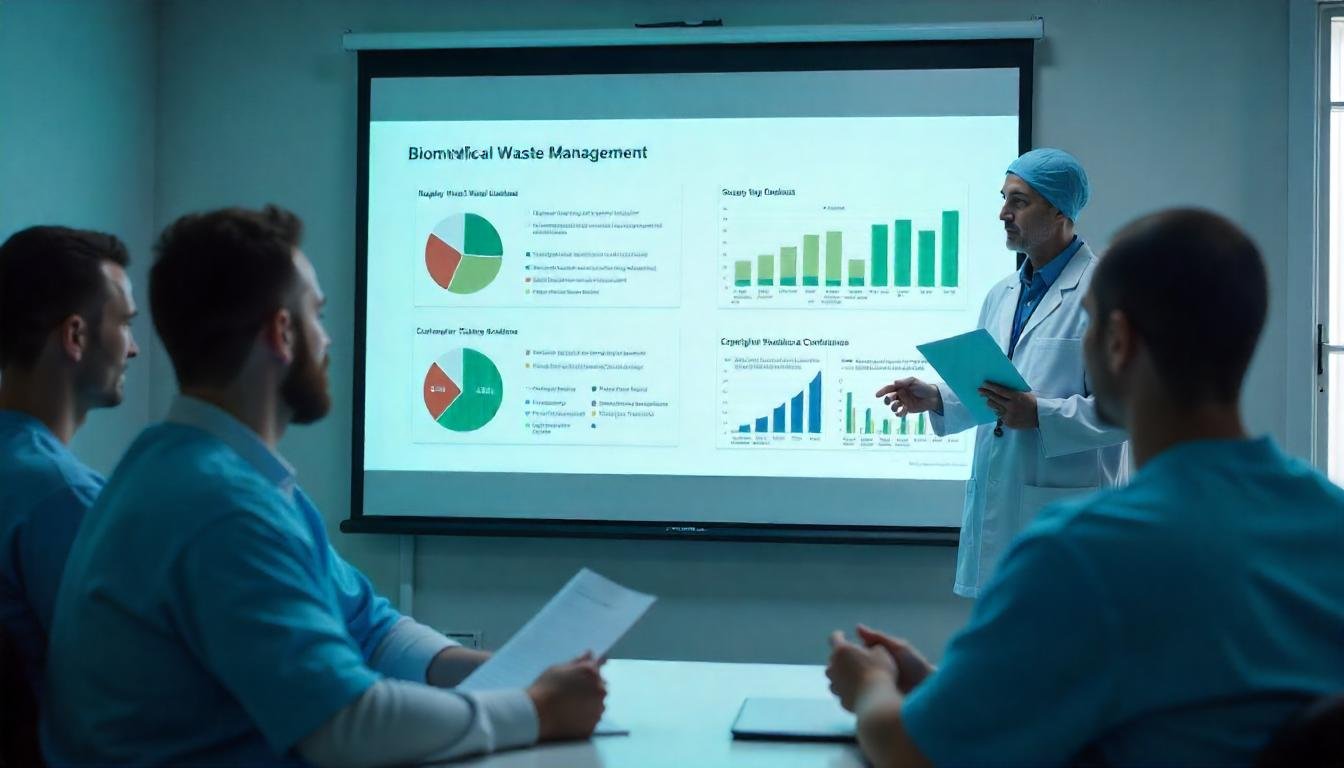Imagine This Scene: A nurse rushes down a hospital corridor, clutching a yellow bin filled with used syringes. Down the hall, a janitor accidentally mixes blood-soaked bandages with regular trash. Within hours, infections spread, and regulators issue fines. This isn’t a dystopian thriller—it’s the reality of poor biomedical waste management. Now, picture a solution as simple as a biomedical waste management PPT training session that prevents these risks. Intrigued? Let’s explore how the right presentation can save lives, cut costs, and keep compliance officers smiling.
Why Biomedical Waste Management Matters (More Than You Think)
Biomedical waste—think needles, surgical gloves, lab cultures—isn’t just “garbage.” It’s a cocktail of pathogens, chemicals, and radioactive materials. Mishandling it can lead to:
- Disease outbreaks (HIV, hepatitis B/C)
- Environmental pollution (toxic ash from incinerators)
- Legal penalties (non-compliance with OSHA or WHO guidelines)
Yet, studies show 60% of healthcare facilities in developing nations lack proper disposal protocols. Enter the biomedical waste management PPT: a visual, engaging tool to bridge knowledge gaps and drive action.
Anatomy of a Killer Biomedical Waste Management PPT
A stellar presentation isn’t just bullet points and clipart. It’s a roadmap for safer practices. Here’s what to include:
The “Why” Slide: Start with Impact
- Show real-world consequences: Photos of contaminated landfills or infection statistics.
- Example: A hospital in Mumbai reduced needle-stick injuries by 45% after implementing PPT-guided training.
Waste Categories Made Simple (Table Alert!)
| Waste Type | Examples | Disposal Method |
|---|---|---|
| Infectious | Blood-soaked gauze, cultures | Autoclaving + Landfill |
| Sharps | Needles, scalpels | Puncture-proof containers |
| Chemical | Mercury from thermometers | Neutralization + Secure disposal |
| Radioactive | Cancer therapy materials | Lead-lined bins + Specialized treatment |
Step-by-Step Handling Protocols
- Use icons to depict steps: Segregate → Store → Transport → Treat → Dispose.
- Embed a 30-second video demonstrating glove removal techniques.
Compliance Made Visual
- Compare “Before vs. After” scenarios.
- Highlight key regulations (WHO, EPA) with hyperlinks to official docs.
5 PPT Design Hacks for Maximum Impact
- Replace Text with Infographics: Show, don’t tell. Use a pie chart to depict waste composition.
- Interactive Quizzes: “Which bin does this soiled plaster go in?”
- Localize Content: Add regional case studies (e.g., how Clinic X in Lagos reduced waste by 30%).
- Embed Checklists: A one-pager for staff to print and post.
- Animate Processes: A looping GIF showing safe sharps disposal.
Common Mistakes (And How to Dodge Them)
- Overloading Slides: 6 lines max per slide.
- Ignoring Audience Needs: Tailor content to janitors vs. surgeons.
- Skipping Updates: Revise annually to reflect new WHO guidelines.
The Future: AR, Gamification, and Beyond

Forward-thinking hospitals are using:
- Augmented Reality (AR): Scan a waste item with your phone to see disposal instructions.
- Gamified Training: Earn badges for scoring 100% on post-PPT quizzes.
- AI Analytics: Track which slides staff rewatch, indicating knowledge gaps.
3 Steps to Launch Your PPT Today
- Audit Existing Practices: Film a day in your waste management cycle.
- Collaborate with Frontline Workers: Nurses know pain points you don’t.
- Test & Iterate: Pilot the PPT in one ward, gather feedback, then scale.
You May Also Like: How ztec100.com is Uncovering the Tech Trends That Will Redefine 2025
Conclusion
A well-crafted biomedical waste management PPT isn’t just a slideshow—it’s a shield against outbreaks, fines, and environmental harm. Ready to turn your training from mundane to memorable? Start designing.
FAQs
How often should biomedical waste training happen?
Annually, or after protocol changes.
Can I reuse a general waste management PPT?
No! Biomedical waste has unique risks. Customize or risk compliance fails.
What’s the #1 thing to avoid in these PPTs?
Jargon. Replace “incineration” with “high-heat disposal.”
How long should the PPT be?
15-20 slides. Attention spans fade after 20 minutes.
Where can I find free templates?
WHO and CDC websites offer editable drafts.











